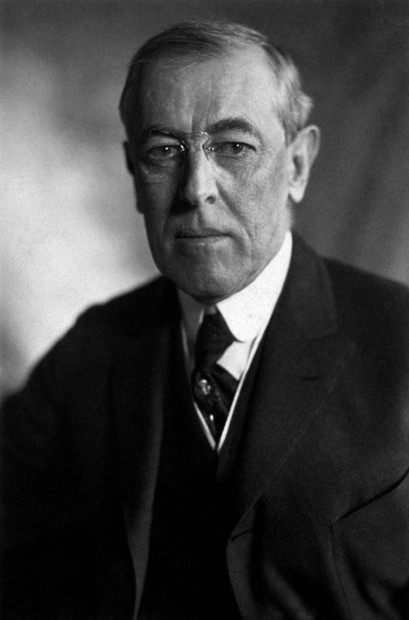“I urge the prompt enactment of legislation which will provide for primary elections throughout the country.”
Woodrow Wilson, “First Annual Message” (December 2, 1913)

Thomas Woodrow Wilson 28th POTUS(1918) Library of Congress Prints and Photographs Division Washington, D.C. 20540 USA
I turn to a subject which I hope can be handled promptly and without serious controversy of any kind. I mean the method of selecting nominees for the Presidency of the United States. I feel confident that I do not misinterpret the wishes or the expectations of the country when I urge the prompt enactment of legislation which will provide for primary elections throughout the country at which the voters of the several parties may choose their nominees for the Presidency without the intervention of nominating conventions. I venture the suggestion that this legislation should provide for the retention of party conventions, but only for the purpose of declaring and accepting the verdict of the primaries and formulating the platforms of the parties; and I suggest that these conventions should consist not of delegates chosen for this single purpose, but of the nominees for Congress, the nominees for vacant seats in the Senate of the United States, the Senators whose terms have not yet closed, the national committees, and the candidates for the Presidency themselves, in order that platforms may be framed by those responsible to the people for carrying them into effect.
Source: Woodrow Wilson: “First Annual Message,” December 2, 1913. Online by Gerhard Peters and John T. Woolley, The American Presidency Project. http://www.presidency.ucsb.edu/ws/?pid=29554.
Wilson’s first message to Congress was fairly unremarkable in what he said. But his method of delivery was significant. In 1913, Wilson delivered the annual “Message to Congress” –later known as the State of the Union address– in person. He was the first President to deliver the annual message in person since Thomas Jefferson abandoned the practice in favor of a written message in 1803.
Thomas Woodrow Wilson was born on December 28, 1856 in Staunton, Virginia.
Read more about Wilson, his life and his Presidency in Don’t Know Much About® the American Presidents–

Don’t Know Much About the American Presidents (2012)
(From Hyperion and Random House Audio)